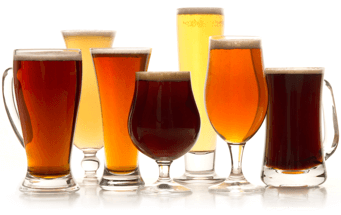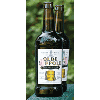Greene King Brewery - Olde Suffolk
-
ABV:
6.00%
Olde Suffolk is one of Britain’s most unusual ales, and a winter classic. It is England’s last example of an ale made by the blending of old and young beers. The “old” component is aged in wooden tuns, and is the only beer in Britain still to employ that method. The technique of aging and blending, to achieve an equilibrium of malty sweetness and acidity was typical in the late 1700s and 1800s, but gradually vanished in the 1900s. Latterly, it was used in the production of strongish “stock” ales.
The two brews from which Olde Suffolk is blended are not sold as products in their own right, though many British drinkers would love to taste them. I have sampled both, in the cellars of the brewery. One is known in the brewery as BPA which is said to stand for Best Pale Ale, though the beer has quite a One is known in the brewery as BPA - which is said to stand for Best Pale Ale, though the beer has quite a full colour by today’s standards. BPA is a mildtasting malty ale of 4.0 per cent alcohol by weight, 5.0 by volume. The other ale is known as 5x (from the days before widespread literacy, when crosses or other symbols were carved or branded on to wooden casks to indicate ascending strength). The 5x has 9.6 by weight; often packed with flavour) this entitles the beer to be known as Strong Suffolk.
There are yet stronger English Old Ales, but few more complex in flavour. The region of production is about an hour from London, still in the south of England, but in an area of rural flatlands that bulge to the east, their coastline often eroded by the sea. This countryside, known as East Anglia, embraces several counties: the rural parts of Essex; Suffolk and Norfolk; Cambridgeshire and Bedfordshire. East Anglia is England’s biggest growing region for malting barley. The brewery is in the oddly-named town of Bury St Edmunds, in Suffolk. Edmund was the king of a nation called Anglia (from which the word “England” originates). He was murdered by Viking raiders in AD 870, and was buried at the site of what became a powerful abbey. When Henry VIII consolidated his power by “dissolving” the abbeys in the 1500s, the monks of St Edmunds hid in tunnels that probably gave rise to the present brewery cellars. The brewery is next door to the home of the last abbot. The brewery dates from at least the 1700s. It was acquired by a brewer named Greene, with a partner, some time after 1799.
It subsequently became known as Greene King. In more recent times, sons of the family have included a famously liberal governor of the BBC, and the novelist Graham Greene, who put in a mash on his 80th birthday. Despite its traditions, Greene King is a dynamic and ambitious enterprise. A decade or so ago, it was regarded as a small brewery. Today, it is, by British standards, at the very least middle-sized.
Oaky, winey, chocolatey, sweet and sour, with notes of passion fruit.
This beer has been served at dinners of the local brewers’ guild with pickled herrings. I like it with blue cheese, especially English Stilton. In the area where it is made, it is used by a local baker in his Christmas puddings.

Unmatched Variety by style, brewery & country
Choose from Five different Beer Clubs offering unmatched variety by brewery,
country of origin, and beer style to suit your specific tastes.


